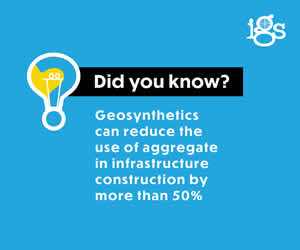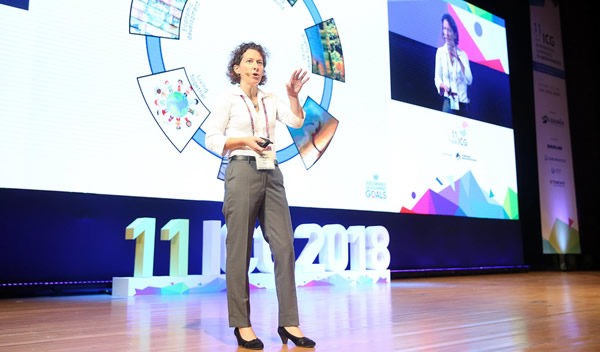Last year, the International Geosynthetics Society released an eBook to mark the 50th Earth Day celebration and outline the many ways in which geosynthetics serve the UN Sustainable Development Goals. The succinct, digital publication (Preparing the Ground for a Brighter Future) is based upon IGS Vice President Dr. Nathalie Touze’s 2018 Giroud Lecture, which itself propelled a major IGS sustainability initiative.
The recently opened sustainability portal on the IGS site gathers a number of resources, including the ebook.
Soon after the release of the original English language edition, the society and its international chapters steadily added translations. Preparing the Ground for a Brighter Future is now available in Chinese, English, French, Japanese, Spanish, and Turkish. More language editions are on the way.
Download and share a copy today:
- Chinese Edition (PDF)
- English Edition (PDF)
- French Edition (PDF)
- Japanese Edition (PDF)
- Spanish Edition (PDF)
- Turkish Edition (PDF)
IGS SUSTAINABILITY MISSION

In Dr. Touze’s lecture, Healing The World: A Geosynthetics Solution, she highlights the 17 SDGs, climate change, and philosophy while emphasizing what we can do in geotechnical engineering to change the world for the better. Geosynthetics are central to engineering’s response.
RELATED: Geotextile Containers Support Mangrove Growth, Healthier Ecosystems
The ebook has been motivated not only by the Touze lecture but by a larger IGS sustainability endeavor to ensure that geosynthetics are not confused with common plastics in public debate. Geosynthetic materials, for example, are utilized in coastal protection applications. Though geosynthetics are polymeric, they should not be erroneously pulled into “plastics in the ocean” discussions.
It’s a proactive measure to contribute to the larger public conversation. Sharing information is essential.
“The IGS is working hard on a range of education initiatives globally,” Touze says in an interview on the IGS website. “But as an industry we also need to shout more about the good work we have done and are doing. Case studies, with quantifiable data regarding carbon footprints, lifecycle analysis, and rigorous testing and communication are essential. These will all help us prove our point; geosynthetics are a long-term force for good.”

RELATED: Life Cycle Assessment of Geosynthetic Reinforced Bridge Abutment Designs
Learn more about the International Geosynthetics Society’s work in sustainability at www.geosyntheticssociety.org/sustainability.












